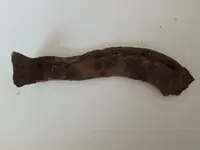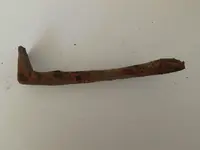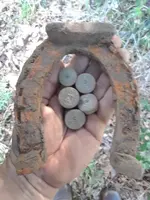Goldstar1
Full Member
- Joined
- May 22, 2010
- Messages
- 222
- Reaction score
- 295
- Golden Thread
- 0
- Detector(s) used
- Goldbug Pro ,
Equinox 800
- Primary Interest:
- All Treasure Hunting
I think this is a mule shoe but I have never see a horse , mule or ox shoe with this sharp spike on the end does anyone know why it was made like this ? was it for use in snow or mud for traction?







